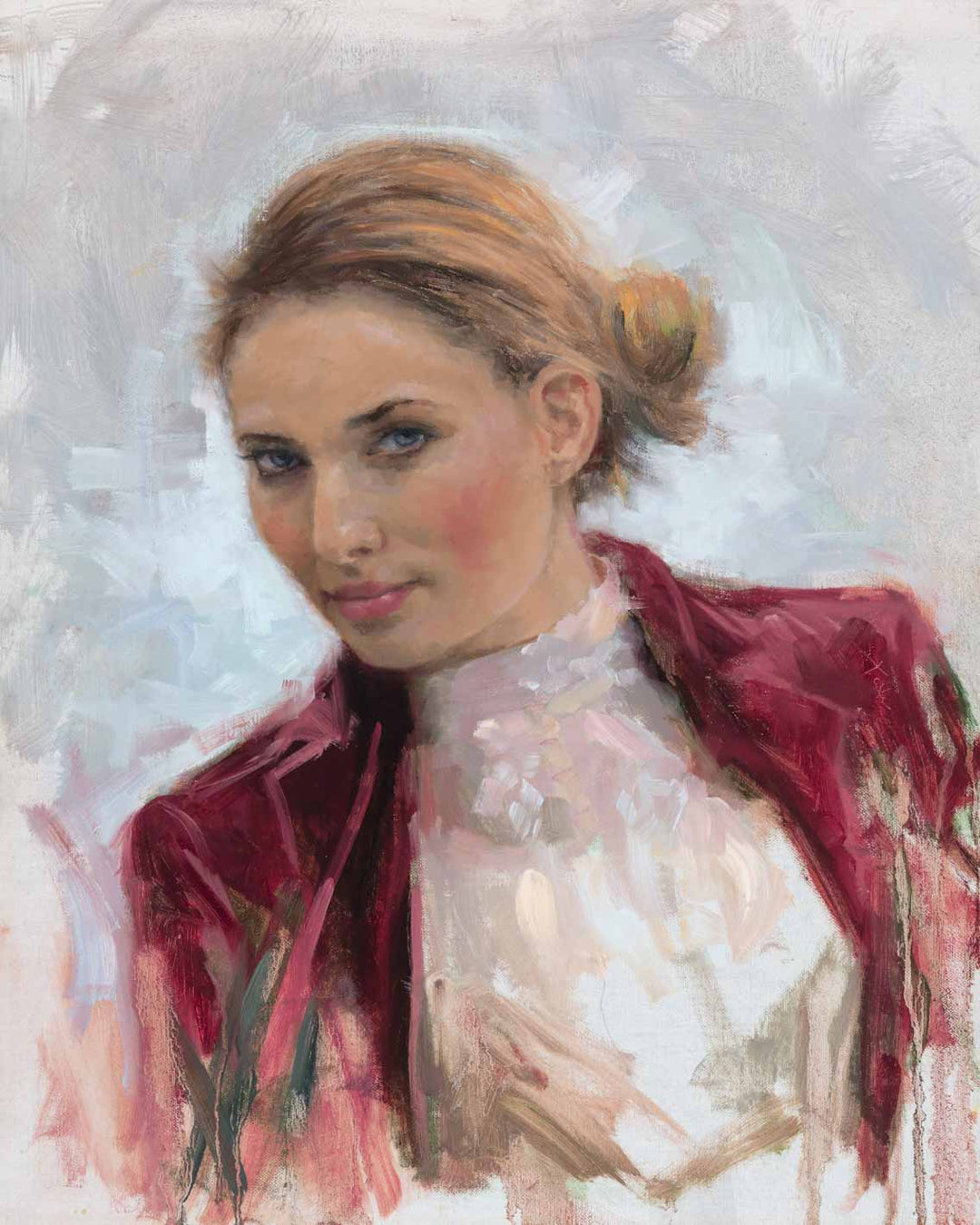Oil Paintings for Sale to Elevate Any Living Area
Oil Paintings for Sale to Elevate Any Living Area
Blog Article
Discovering All Regarding Oil Paints: An Overview to Understanding Their Beauty and Worth
Oil paints have actually astounded audiences for centuries, using a glimpse into the creative proficiency of numerous ages. Their abundant background is linked with cutting-edge techniques and profound psychological expression. Understanding the materials and approaches behind these artworks can improve appreciation. Additionally, the marketplace for oil paints offers possibilities for capitalists and collectors alike. As one explores this fascinating world, the question develops: what makes an oil paint really beneficial?
The History of Oil Painting: A Trip Via Time
Oil painting has roots that date back to ancient times, it genuinely prospered throughout the Renaissance, when artists uncovered its versatility and rich color capacity. Early instances can be mapped to the 7th century, with strategies developing significantly throughout cultures. The tool came to be noticeable in Northern Europe in the 15th century, especially through the works of artists like Jan van Eyck, that pioneered its usage for thorough realism and dynamic shades. This period marked a departure from tempera paints, enabling greater deepness and appearance. As oil paint spread, it affected plenty of artists, leading to work of arts by renowned numbers such as Leonardo da Vinci and Rembrandt. The tool's heritage continues, shaping the art world well into modern times.
Comprehending Oil Repaints: Materials and Techniques
As musicians explore the world of oil paints, they come across a varied range of materials and methods that define this medium. The main parts of oil paint include pigments, which supply color, and drying out oils, such as linseed, that bind the pigments and assist in application. Numerous additives can modify the paint's structure and drying time, improving versatility. Methods like glazing, where clear layers are accumulated, and impasto, which entails using thick paint, enable various aesthetic impacts. Furthermore, using brushes, combination blades, and even fingers can develop one-of-a-kind appearances and surfaces. Understanding these products and techniques makes it possible for artists to totally share their creativity and accomplish the preferred impact in their art work.
The Role of Color in Oil Paints
Color plays an essential role in oil paintings, affecting both visual charm and emotional resonance. Recognizing color concept basics, including the connections between tones, can boost an artist's capacity to convey state of mind and ambience. Additionally, understanding color mixing strategies permits higher depth and splendor in a painting's palette.

Color Theory Fundamentals
Recognizing shade concept is necessary for musicians working with oil paints, as it creates the foundation for creating unified and visually engaging make-ups. Color concept incorporates the study of just how colors connect, the shade wheel, and the relationships between primary, second, and tertiary shades. Musicians utilize complementary colors to enhance contrasts and develop prime focus, while analogous shades advertise unity and cohesiveness within an item. Additionally, the principles of cozy and trendy shades affect the understanding of depth and area in a paint. Comprehending these concepts allows artists to manipulate shade properly, assisting the audience's eye and interacting their intended message. Mastery of shade concept inevitably improves an artist's capability to communicate feelings and ideas through their work.
Psychological Impact of Color
The psychological influence of shade in oil paints plays a crucial function in exactly how viewers regard and connect with artwork. Shades stimulate details feelings and state of minds, affecting the audience's mood. Cozy colors like reds and oranges can produce a sense of heat and power, while cool tones such as blues and environment-friendlies commonly evoke peace or self-contemplation. Artists tactically select color combinations to boost narrative elements, assisting the audience's psychological trip. The saturation and comparison of shades further amplify these impacts, drawing interest and developing emphasis. Ultimately, the interaction of shades in oil paints not only improves their visual allure yet additionally works as an effective medium for psychological expression, improving the viewer's experience and interpretation.
Color Combining Techniques
While numerous facets of oil paint add to the overall composition, understanding shade blending strategies is important for achieving wanted results and depth. Shade mixing can be approached via different methods, including the additive and subtractive processes. Additive blending includes combining shades of light, while subtractive mixing counts on pigments, where shades mix to create new tones. Musicians typically use a limited combination to develop unified works, recognizing the partnerships between main, second, and tertiary shades. Methods such as glazing and scumbling better enhance deepness and luminosity. By skillfully blending shades, a musician can evoke emotions, produce prime focus, and attain a sense of realistic look, ultimately raising the painting's aesthetic and emotional effect.
Famous Oil Painters and Their Iconic Works

Famed for their mastery of color and technique, oil painters have actually produced several of one of the most well known art work in history. Renowned artists like Vincent van Gogh mesmerized target markets with his stirring brushwork in "Starry Evening," while Claude Monet's "Impact, Daybreak" prepared for Impressionism. Leonardo da Vinci's "Mona Lisa" stays an enduring sign of imaginative wizard, showcasing his ability in catching human expression. Rembrandt's "The Night Watch" shows his ingenious use of light and shadow. Various other notable figures consist of Pablo Picasso, that transformed modern art with his vibrant trial and error in works like "Les Demoiselles d'Avignon," and Georgia O'Keeffe, whose vibrant representations of landscapes and flowers helped specify American innovation. Each musician's distinct design added considerably to the oil paint landscape.
Exactly how to Evaluate the Quality of an Oil Painting
Evaluating the top quality of an oil painting entails a mindful evaluation of workmanship strategies, as well as an analysis of shade and make-up. Observing brushwork, layering, and the application of paint can disclose the artist's ability level. Additionally, the interaction of colors and the total plan of components contribute considerably to the painting's aesthetic value.
Examining Craftsmanship Strategies
A meticulous analysis of workmanship methods is essential for figuring out the quality of an oil paint. Critics must initially check out the application of paint; thick, distinctive brushstrokes may recommend an experienced hand, while extremely uniform applications might indicate an absence of depth. oil paintings for sale. The layering method is also important; the presence of glazes and differed density can enhance brightness and complexity. Additionally, the quality of the products utilized, such as the canvas and pigments, plays a considerable role in longevity and total visual. Attention to detail in elements like edges and changes between colors mirrors the musician's commitment to their craft. Inevitably, these techniques add to the painting's psychological influence and market value, functioning as indicators of the musician's skill and intent
Assessing Shade and Composition
While assessing the quality of an oil paint, one must concentrate on the interplay of shade and structure, as these elements are essential to the artwork's general impact. Color options can evoke feelings and establish mood; for that reason, the musician's palette ought to be taken a look at for consistency and comparison. A healthy structure routes the audience's eye and produces a sense of unity. Artists frequently employ methods like the regulation of thirds or leading lines to enhance visual rate of interest. In addition, the use of light and shadow can include deepness, improving the three-dimensionality of the painting. Inevitably, an effective oil painting weds shade and structure, involving the visitor and inviting a much deeper appreciation of the musician's vision and technique.
Taking care of and Preserving Oil Paintings
Proper treatment and preservation of oil paints is important for maintaining their integrity and durability. To shield these art work, it is essential to show them far from direct sunshine, which can trigger fading and staining. Keeping a steady setting with regulated temperature and moisture more aids in preventing damages. Cleaning up need to be done carefully utilizing a oil paintings for sale soft, completely dry towel, staying clear of any extreme chemicals that might harm the paint or varnish. Regular assessments for indicators of deterioration, such as fracturing or flaking, are recommended. When moving or storing oil paints, appropriate extra padding and framing are necessary to stay clear of physical injury. Eventually, diligent care adds to the visual charm and value of oil paintings gradually.
The Marketplace for Oil Paints: Spending and accumulating
Recognizing the marketplace dynamics for oil paintings is crucial for enthusiasts and financiers alike. The worth of these artworks is affected by different variables, including the artist's online reputation, historic importance, and present patterns. Collection agencies commonly seek items that resonate directly while considering potential recognition in value. Galleries and auctions serve as key locations for acquiring and selling, with prices changing based on demand and rarity. Buying oil paints calls for research study into the market, along with an understanding of credibility and provenance. In addition, arising musicians might use chances for substantial returns, while developed names can command high costs. In general, a strategic strategy to collecting can produce both visual pleasure and financial rewards.

Frequently Asked Concerns
What Are the Ecological Influences of Oil Paint Materials?
The environmental influences of oil paint products include the launch of volatile natural substances (VOCs), unsafe waste generation, and source removal for pigments. These aspects add to contamination and ecological deterioration, elevating worries amongst environmentally aware musicians and consumers.
Just How Do Different Canvases Affect Oil Paint Outcomes?
Different canvases affect oil paint results significantly. Texture, surface, and absorbency high quality can change paint application, drying times, and color vibrancy. Musicians often choose details canvases to achieve desired results and boost their artistic expression.
Can Oil Paintings Be Restored if Harmed?
If harmed, Oil paints can undoubtedly be brought back. Specialist conservators make use of numerous methods to fix splits, tidy surface areas, and address staining, making sure that the artwork maintains its initial elegance and value for future generations.
What Are the Indications of an Original Oil Painting?
The indications of an original oil paint consist of noticeable brush strokes, appearance variants, and an uneven canvas weave (oil paintings for sale). Additionally, credibility might be validated through provenance, signatures, and the visibility of a varnish layer unique to oil tools
Exactly How Has Innovation Influenced Modern Oil Painting Techniques?
Modern technology has actually substantially influenced modern-day oil painting techniques by presenting digital devices for planning, enhanced products for structure and long life, and online systems for sharing and offering art, therefore expanding musicians' innovative opportunities and target market reach. Oil painting has roots that date back to old times, it absolutely flourished during the Renaissance, when artists uncovered its adaptability and rich color capacity. The emotional impact of color in oil paints plays a vital function in just how viewers connect and perceive with artwork. While many facets of oil painting add to the general structure, grasping shade mixing strategies is important for attaining preferred impacts and deepness. Evaluating the quality of an oil painting entails a careful analysis of craftsmanship methods, as well as an evaluation of color and structure. While evaluating the top quality of an oil paint, one need to focus on the interplay of color and make-up, as these aspects are basic to the artwork's total impact.
Report this page